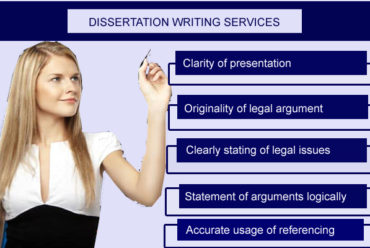What is an Academic Paper – Types and Writing Process
An academic paper is a written document that presents research, ideas, or analysis on a specific topic. It usually follows a formal structure, including sections like an introduction, methods, results, and discussion.
The main goal of an academic paper is to share new knowledge or insights with others in the academic community. These papers are often reviewed by experts in the field before being published in journals to ensure the quality and reliability of the information.
Purpose of Academic Paper Writing
The purpose of writing an academic paper is to:
- Share Knowledge: Academic papers communicate new research findings, ideas, or analyses to the academic community and the public.
- Contribute to the Field: By presenting original research or a new perspective, academic papers add to the existing body of knowledge in a specific field of study.
- Document Research: Academic papers provide a detailed record of research processes, methods, and results, allowing others to replicate or build upon the work.
- Engage in Scholarly Dialogue: Writing an academic paper allows researchers to engage in a broader conversation with other scholars, challenging, supporting, or refining ideas.
- Advance Academic and Professional Careers: Publishing academic papers can enhance a researcher’s reputation, lead to career advancement, and open opportunities for collaboration.
- Educate and Inform: Academic papers can be used as educational tools, helping students, educators, and professionals learn about new developments in a field.
Types of Academic Papers
There are several types of academic papers, each serving different purposes.
Here’s a table summarizing the different types of academic papers:
| Type of Academic Paper | Description | Purpose |
|---|---|---|
| Research Papers | Present original research, including methods, data, and conclusions. | Share new research findings and contribute to the academic field. |
| Review Papers | Summarize and analyze existing research on a particular topic. | Provide a comprehensive overview of existing knowledge. |
| Case Studies | Examine a specific case, event, individual, or group in detail. | Explore complex issues in real-world contexts. |
| Theoretical Papers | Propose new theories or refine existing ones. | Develop concepts and frameworks within a field. |
| Position Papers | Present the author’s stance on a particular issue, supported by evidence. | Persuade readers of the validity of the author’s viewpoint. |
| Methodology Papers | Focus on developing or improving research methods. | Describe and evaluate research methods for future use. |
| Conference Papers | Short papers presented at academic conferences. | Share research findings or ideas in a more concise format. |
| White Papers | Authoritative reports on specific issues, often used in policy-making. | Inform or influence decisions on particular topics. |
| Essays | Short pieces of writing that argue a specific point or explore a topic. | Discuss or analyze a topic, common in humanities and social sciences. |
| Commentaries | Short papers providing critical opinions on previously published work. | Stimulate discussion or debate on a specific issue. |
Here are some of the most common types:
- Research Papers: These papers present original research, including the methods, data, and conclusions. They often follow a standard format with sections like introduction, literature review, methodology, results, and discussion.
- Review Papers: Also known as literature reviews, these papers summarize and analyze existing research on a particular topic. They don’t present new research but provide a comprehensive overview of what’s already known.
- Case Studies: These papers focus on a detailed examination of a specific case, event, individual, or group. Case studies are often used in fields like medicine, law, and social sciences to explore complex issues in real-world contexts.
- Theoretical Papers: These papers propose new theories or refine existing ones. They involve the development of concepts and frameworks rather than presenting empirical data.
- Position Papers: Also known as opinion papers, these present the author’s stance on a particular issue, supported by evidence and reasoning. They aim to persuade the reader of the validity of the author’s viewpoint.
- Methodology Papers: These papers focus on developing or improving research methods. They provide detailed descriptions of the methods used in research and discuss their advantages and limitations.
- Conference Papers: These are presented at academic conferences and are often shorter than journal articles. They can be research papers, case studies, or theoretical papers and are sometimes published in conference proceedings.
- White Papers: These are authoritative reports that provide information on a specific issue or topic, often used to inform or influence policy decisions. They are common in fields like government, business, and technology.
- Essays: In an academic context, essays are shorter pieces of writing that argue a specific point or explore a particular topic. They are common in humanities and social sciences.
- Commentaries: These are short papers that provide critical or analytical opinions on a previously published work or a current issue in a specific field. They often aim to stimulate discussion or debate.
Elements of an Academic Papers
Writing an academic paper is like telling a story, but with facts and research. Here’s a breakdown of the key parts that make up this kind of writing:
- Title: Think of the title as the name of your story. It should give a clear hint about what your paper is all about.
- Abstract: The abstract is like a sneak peek at your story. In just a few sentences, you summarize the whole paper—what you researched, how you did it, what you found, and why it matters.
- Introduction: The introduction is where you set the scene. You introduce the topic, give some background, and explain why this topic is important. You also let the reader know what your main point or argument is, which is called the thesis statement.
- Literature Review: Here, you talk about what other researchers have already said about your topic. It’s like showing your readers that you’ve done your homework and understand the current conversation on the subject. You also point out where there’s still more to explore—this is where your paper comes in.
- Methodology: This part explains how you did your research. It’s like sharing your recipe if you were cooking something—you list the ingredients (your data) and the steps (your methods) so that someone else could follow along.
- Results: In this section, you lay out what you found from your research. It’s all about the facts and data. If you did experiments, this is where you show what happened.
- Discussion: Now it’s time to talk about what those results mean. You interpret the data, explain how it supports (or doesn’t support) your thesis, and connect it to the bigger picture. It’s like having a conversation with your readers about what you’ve discovered.
- Conclusion: The conclusion is where you wrap things up. You restate the main points, emphasize why your findings matter, and maybe suggest what should happen next in this area of research.
- References: Finally, you give credit to the sources you used. This is like the “credits” at the end of a movie. It’s important to list every book, article, or other resource you mentioned in your paper, following a specific format.
Each of these elements helps to create a clear, well-organized paper that communicates your ideas and research effectively. By following this structure, you guide your readers through your work in a way that makes sense and builds understanding.
Writing Process
Here is a table that outlines the key steps in the writing process:
| Step | Description |
|---|---|
| 1. Prewriting | Brainstorming ideas, researching the topic, and organizing thoughts. Creating an outline to structure the paper. |
| 2. Drafting | Writing the first version of the paper, focusing on getting ideas down without worrying too much about perfection. |
| 3. Revising | Reviewing and refining the content. This includes reorganizing ideas, improving clarity, and enhancing arguments. |
| 4. Editing | Checking for grammar, punctuation, spelling, and formatting errors. Making sure the writing is polished and professional. |
| 5. Proofreading | Final review to catch any remaining errors or inconsistencies. Ensuring the paper is ready for submission. |
| 6. Publishing | Submitting the final version of the paper, whether for a class, journal, or other audience. |
Faqs
1. What is an academic paper?
An academic paper is a structured piece of writing that explores a specific topic in depth, usually based on research and analysis. It’s a way to communicate your findings, ideas, or arguments to an academic audience.
2. How do I choose a topic for an academic paper?
Choosing a topic involves identifying an area of interest within your field of study that is both relevant and researchable. It’s important to pick a topic that you’re passionate about and that has enough resources available for you to explore.
3. What makes a good thesis statement?
A good thesis statement is clear, concise, and specific. It should present the main argument or point of your paper, guiding the direction of your research and writing. A strong thesis answers a question or addresses a problem directly.
4. How should I structure an academic paper?
An academic paper typically follows a structured format, including a title, abstract, introduction, literature review, methodology, results, discussion, conclusion, and references. Each section serves a specific purpose in presenting your research clearly and logically.
5. What is the purpose of a literature review?
The literature review examines existing research related to your topic. It provides context for your study, shows how your work fits into the broader academic conversation, and identifies gaps that your research aims to fill.
6. How do I properly cite sources?
Proper citation is crucial in academic writing to give credit to the original authors of the sources you use. This involves following a specific citation style (like APA, MLA, or Chicago) and including both in-text citations and a references list.
7. What are common mistakes to avoid in academic papers?
Common mistakes include unclear thesis statements, poor organization, lack of evidence to support claims, improper citation, and neglecting to proofread. To avoid these, ensure your paper is well-structured, thoroughly researched, and carefully edited.
8. How can I improve my academic writing?
Improving academic writing involves practice, feedback, and revision. Focus on clarity, coherence, and strong arguments. Reading academic papers in your field can also help you understand the tone, style, and structure expected in scholarly work.





